They have this thing in Lithuania that they strive to rebuild the past in the most literal, concrete and visible way they can, bricks and mortar and shiny new paint at the ready as if that's what matters and where the essence is - in the very first layer that meets the least discerning eye and nowhere else. And funnily enough the rebuilding of the past sits side by side with failing to take care of the present1 but enthusiastically building for the future past just next to it, so that it all looks - depending on where you turn - either decrepit or ultra-shiny among new-old:
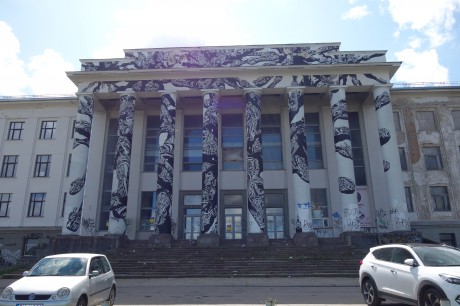
Decrepit building at the top of the hill in central Vilnius. Or looking up to see what you are all headed to.

The shiny new dwarfing the not-so-shiny old in the front. Or looking the other way - down the hill, away from the decrepit building at the top.
As to the rebuilding of the past, there's no more trace of the red road in Vilnius2 but the new old castle is fully completed, a white building with small windows next to the mound where the ruins used to be in the very centre of the town behind the other white building with fancy windows and a lot of guys on top holding on to huge crosses. Essentially holding on to their catholicism I suppose, in the very literal and concrete way that seems to be specific to the place. In any case, the completed rebuilding of the past from one ruined tower to a whole "palace" further includes a black statue that can proudly compete with Romanian incompetence at building monuments of this sort. Apparently it's called all sorts of mocking names by locals who focus on the guy's position but I find the "horse" just as weird - as if it were pushing the man over the side of that plinth and into the plazza below:
Just so you don't end up thinking that this rebuilding of monuments and all things past is a Vilnius-only thing or even a modern-only thing or even a focused-on-some-specific-past-only thing, there's also the castle at Trakai as an earlier example of the same approach - if by other masters - in those lands: while there was once a castle there, what you can see nowadays is at best a reconstruction and more to the point a fancy and a pretense really. The history of the place mentions a gradual building and addition of defenses and features while the place held military significance3 followed by similarly gradual falling into disuse and disrepair as its usefulness dwindled in the 17th century. Not a bad life for a castle after all and arguably a rather honorable one to start off as a little fortress on an island, to grow and expand, to serve in all ways possible from an outpost to a dungeon to a royal summer residence and then to rest its weary ruins surrounded by the same blue waters that for all their daily change of colours turned out to have changed so very little by comparison. I've seen photos of the place in the 1870s and I've seen a picture of it from a few years earlier and I'd have rather visited those honest ruins than the reconstructed tourist-attraction in castle-shape for all its prettiness and all its exhibits. Still, one visits always the castle that is rather than the castle that was and there's little point in faulting locals for rebuilding a castle now precisely to bring in the paying hordes while only a few centuries ago they had built a castle to keep away the armed hordes:
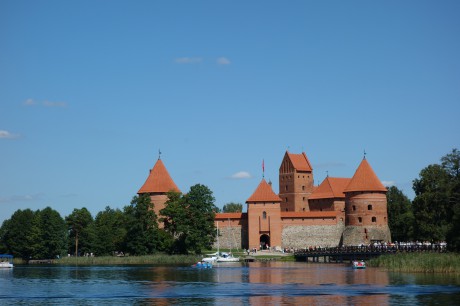
Tourist trap in the shape of an old castle that used to be on those same islands at Trakai, in other times, with other lives.
And so I took the child to Trakai and showed him around the whole place, reconstructed castle included and he was delighted that there was a moat and there were boats and it was truly "on an island" as it's apparently correct and proper for a castle in his mind. The walls and unexpected ends were sort of all right too, at least for... a bit:
The child found the castle smelly inside and it was indeed smelly on a hot day with that many visitors going around. I couldn't get him to try the prisoner cage nor any of the other similarly demeaning attractions that people around were nevertheless rather happy to squeeze themselves in. He did watch them smiling though so I suppose they served their purpose anyway. And he got some sort of equipment more to his liking too so he posed with his new wooden axe as ferociously as a 6 year old in shorts and sandals and otherwise a sunny disposition can look:
As a bit of a break from rebuilded castles of all sorts, we tried on other days the tamed and less tamed nature all around Vilnius. For the town is indeed the greenest town of that size that I know - its parks are more like proper woods and at times, starting from the centre of the town it can easily feel that the town itself is a bit of outgrow on the outskirts of the woods rather than the woods being on the outskirts of the town4.
Rather insensitive to green meadows and carefully constructed waterfalls, the child was nevertheless delighted to get to chase a ball with sunglasses and cap on just as well. So he chased the ball and played some football in recruited-company while we had a walk around and enjoyed the green and the quiet and the less crowded place.
And then we sampled the very tasty shashlik and I gave up on trying to find a drink I might actually like on their menu so I decided to get to know at least what I don't like, namely all the Lithuanian beers:
As they didn't bother to actually provide any sort of help naming them or labelling them, I had to match them to the menu as a sort of extra challenge to make the time pass while the shashlik was being done. But better than their actual names, I remember their very specific taste so that I can describe them like this: from left to right above you have some pish-wasser with an unidentified aftertaste; a glass of liquid smoke with no other taste; an almost-beer with a slightly bitter after-taste; the best Lithuanian beer that turned out to be Belgian, of course; a foamy yellow wasp-attractor liquid.
To forget about beers though, there were otherwise in other places more interesting drinks, from those for little ones...
...to those for very stubborn ones:
The town has changed in many ways but most striking of them all are two that I can see: a lot of new buildings appeared; a lot of the local specific goods - including a whole selection of caviar in the shops! - all but disappeared. The change of wind from east to west is clear but nobody seems to have noticed that the problem stays the same - it's one of balance and strengths of the winds that are let through, not one of choosing sides. A hurricane from the east is just as bad as far as I can see as a hurricane from the west. Anyways, the locals are otherwise generally helpful and pleasant enough but you'll be able to hear some outbursts too - especially if you know what language to listen to, at what time - and otherwise there is the same boredom decay that I saw recently hanging over Romanian towns, almost palpable in the standard-malls, among the rather idle employees that have to watch rows of chained items such as school bags that cost 300 euros or more each, for no clear reason at all. ↩
It was still there some ~10 years ago when I last walked the whole centre of the town and took in all the details, red bricks included. And I know now that I should have written it all up as it was then, for I'm now sorely lacking any way of providing the references that my mind throws in at almost every other sentence. But at that time I couldn't see anything worth writing about - I explored the city and took it in without any need to spit anything out again. Perhaps I was way too inwards focused, perhaps I was too young and too foolish to know better. But mostly I had had by then such a terrible and prolongued lack of anything useful coming from the *contemporary* outside that I maintained communications very close to a minimum really. ↩
Until about 1410 when the Teutonic Knights were defeated. ↩
This is true in a direct sense too: it's the only town I know of where you need to go *towards* the centre to get to the biggest parks rather than away from the centre. On the first visits this made a total mess of my internal bearings, of course. ↩
Comments feed: RSS 2.0
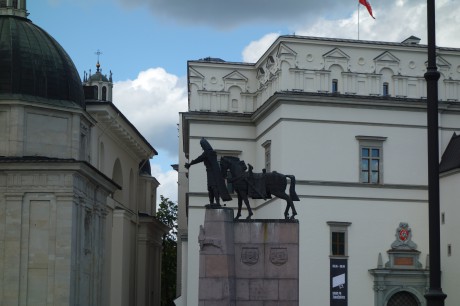
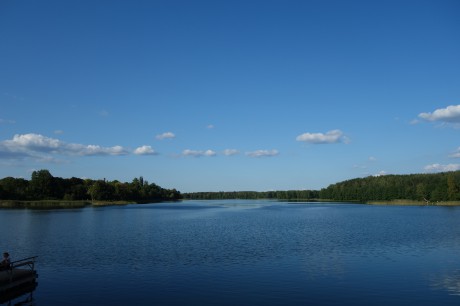
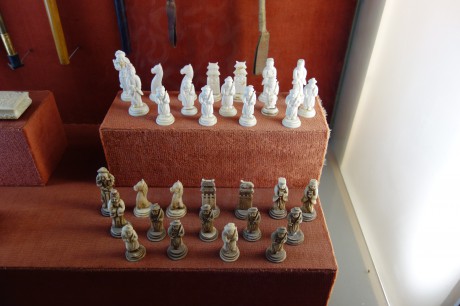
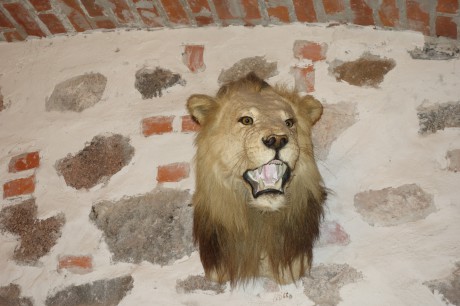
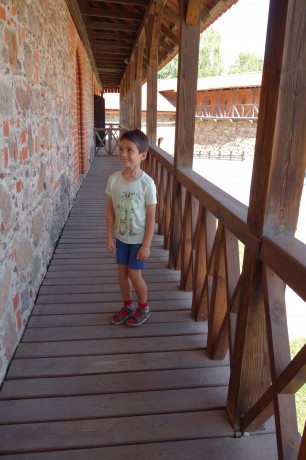
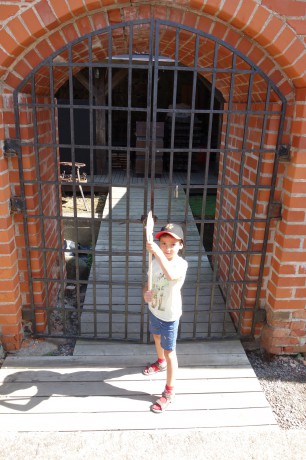
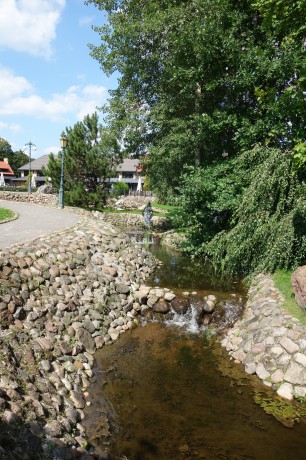
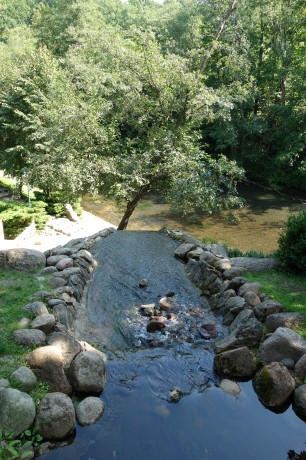
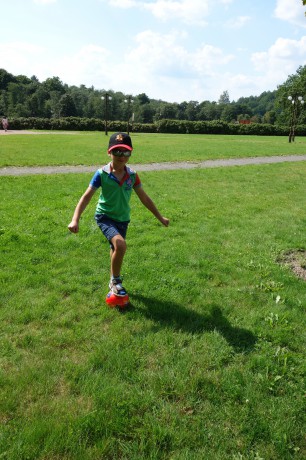
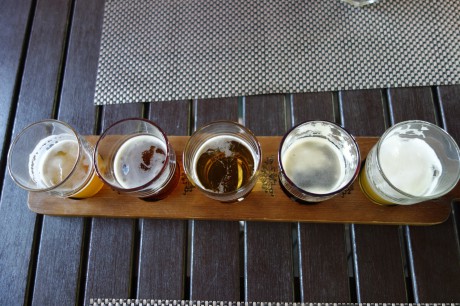
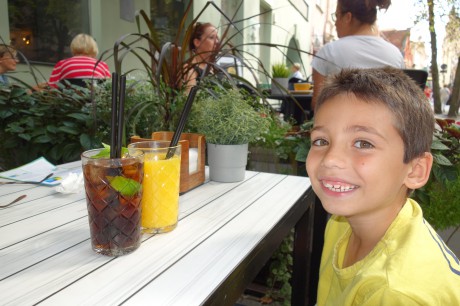
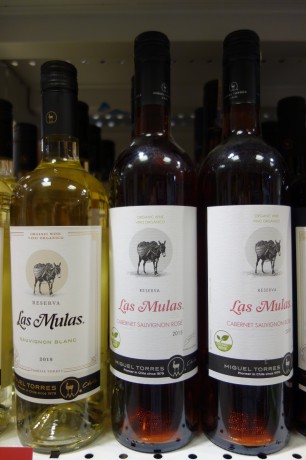
[...] back from any holidays, no matter how short, means that I spend initially a few days simply with the task of picking up [...]